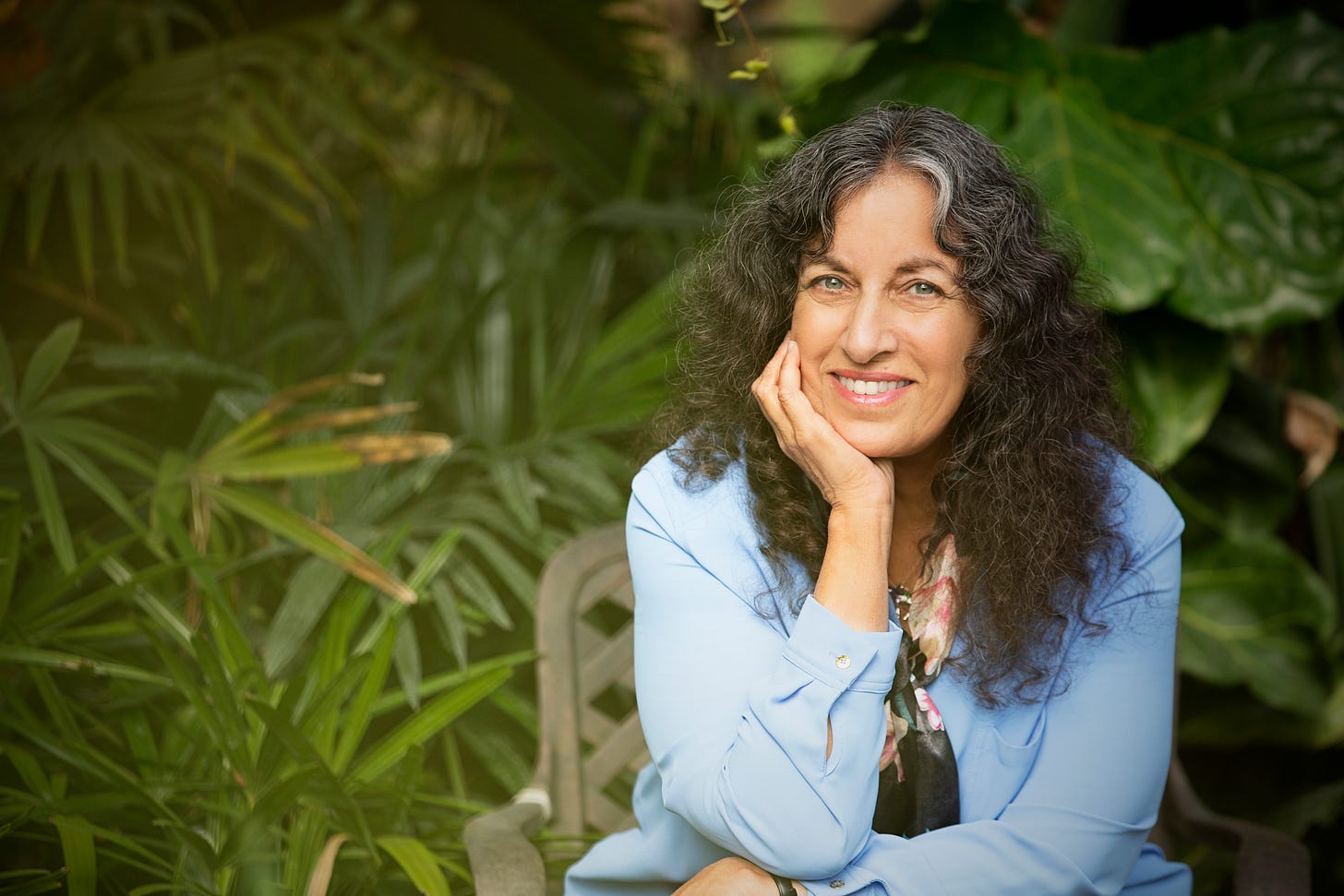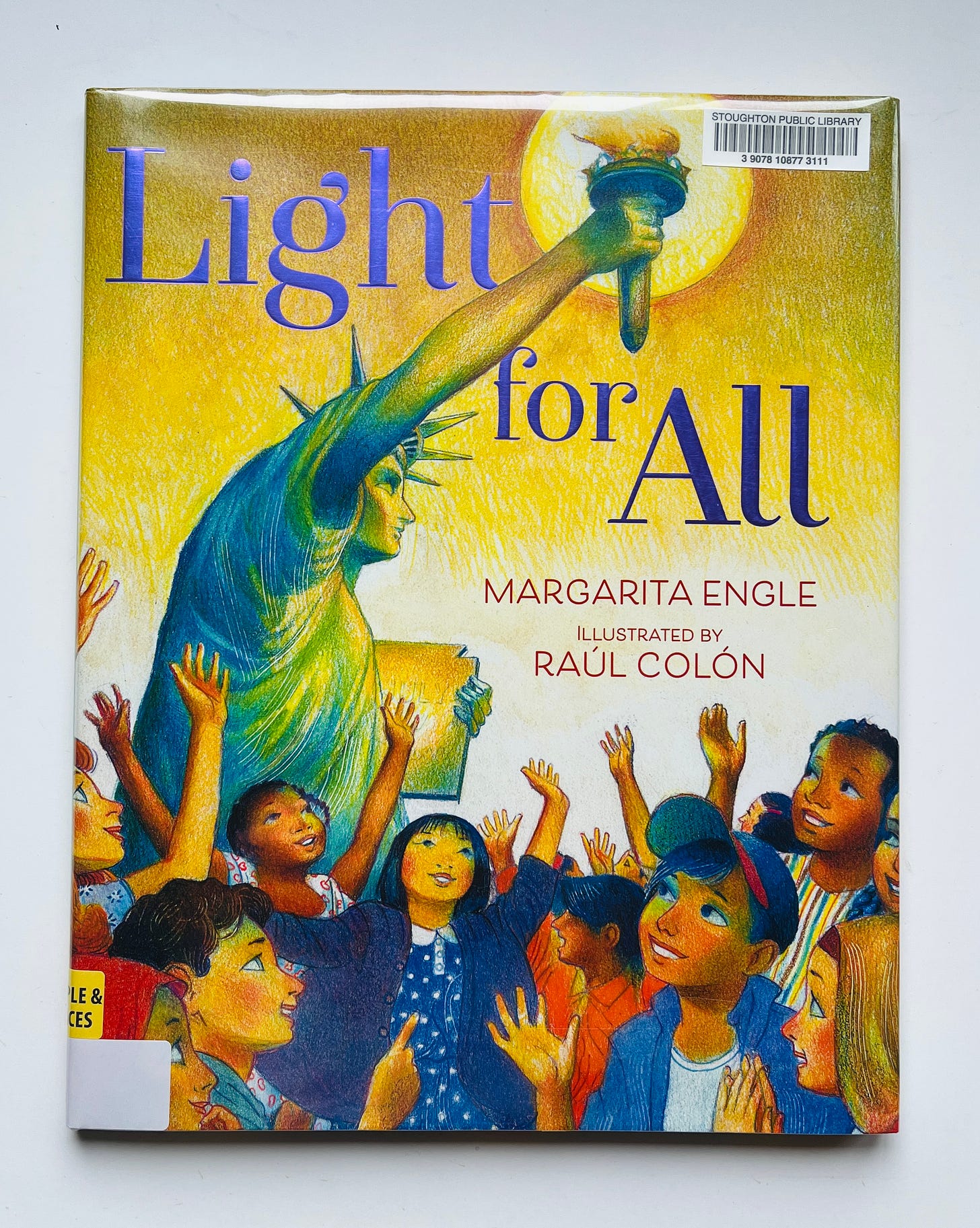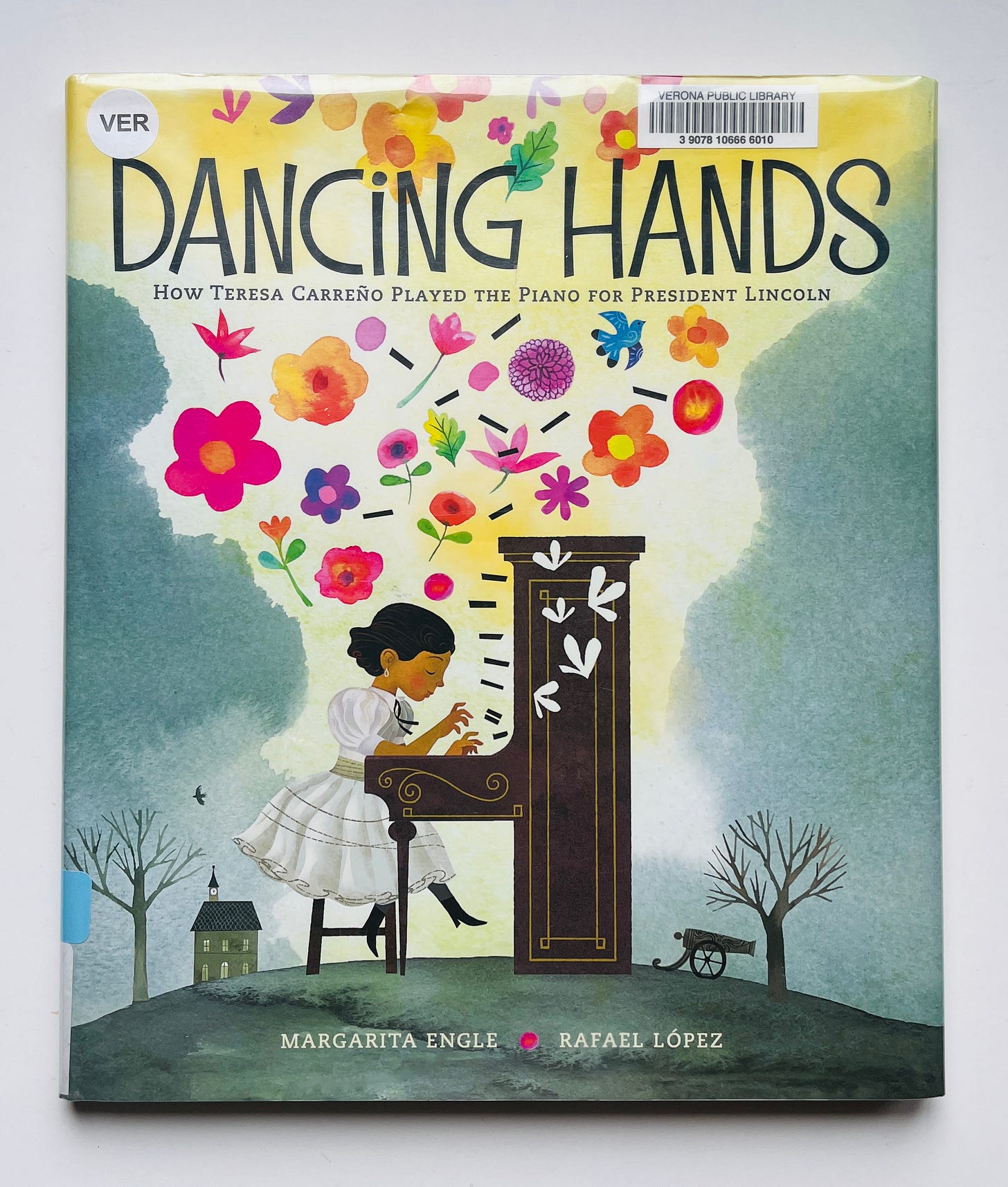I first became aware of Margarita Engle when I checked Drum Dream Girl: How One Girl’s Courage Changed Music out of the library when my youngest child was a toddler. The story of a girl living in a society where “girls cannot be drummers,” where she is told repeatedly to be quiet, but she cannot — no, she will not — stop drumming captured my heart, but more importantly, absolutely captivated my little reader. (I have since recommended this book to countless people, and it remains one of our most beloved titles from that season of our lives.)
Everything I discovered from there just convinced me further that Engle is one of our greatest living writers for children. (Of course, her particular love of and emphasis on poetry — especially novels in verse — endears me to her enormously. And: most of Engle’s books are available in both English and Spanish, which is another credit to her.)
There’s not a single title of hers I’ve ever read, or shared with my children, that hasn’t been wonderful in every way. She’s one of these rock-solid authors you can count on — if you see her work at the library, bookstore, anywhere, don’t think twice: just grab it.
Here is Margarita’s bio, written by her:
Margarita Engle is the Cuban-American author of books such as Enchanted Air, Drum Dream Girl, Dancing Hands, and The Surrender Tree, which received a Newbery Honor. She served as the national 2017-2019 Young People’s Poet Laureate. Other awards include Pura Belpré Medals, the Golden Kite Award, Walter Honors, Américas Awards, Jane Addams Award, PEN U.S.A., and NSK Neustadt Prize. Recent young adult verse novels include Wings in the Wild and Wild Dreamers. Recent picture books include Water Day and The Sculptors of Light. Engle’s next verse novel is Island Creatures, and her next picture book is Eloísa’s Musical Window.
Margarita was born in Los Angeles, but developed a deep attachment to her mother’s homeland during childhood summers with relatives on the island. She studied agronomy and botany along with creative writing, and now lives in central California with her entomologist husband and squirrel-chasing Border Collie.
How long have you been writing for children? What called you to this work?
Poetry was my first love when I was a child and teenager. Later I studied botany and agronomy, did a lot of scientific writing, and eventually wrote poetry and short stories for literary journals, journalism for newspapers and magazines, and adult novels in a traditional prose style. Then I discovered middle-grade and young adult verse novels! I fell in love with free verse, and began to experiment. I’ve never returned to any of those other forms of writing. As I grow older, my love for children’s literature also grows, because it’s a magical way to communicate with the future.
You’ve written a number of outstanding books delving deeper into and celebrating Latinx culture, informed by your Cuban heritage.
How do you decide what, or sometimes who, to write about? What is your research process?
The subjects of my biographical books were chosen because they are about people who made hopeful decisions, often in times or situations that seemed hopeless. In the U.S. as well as colonial Cuba, women and people of color have been written out of textbooks by white male historians. Many of my books have made an effort to bring marginalized heroes back into their rightful place of honor.
My research process involves reading as much as I can find, then searching farther and farther back in time until I locate first-person narratives such as diaries. That’s where the really fascinating personal observations are hidden, along with the most essential information: emotions!
Many of your books are written in verse — why verse instead of prose? What is it that you find so compelling about poetry?
I have 40 books for young readers, and more are in various stages of editing by several publishers. So far my 21 verse novels, two verse memoirs, and 17 picture books are all written in poetry. I choose verse simply because poetry is musical language, and because poetry makes me happy.
What are a few titles, recent or otherwise, that have stood out to you as being so excellent you wish they were on the shelf in every home and classroom?
Here are a few of my favorite Latinx verse novels:
The Poet X by Elizabeth Acevedo
Land of the Cranes by Aida Salazar
Saints of the Household by Ari Tison
I’d also like to recommend Worm, Edel Rodríguez’ graphic memoir about coming to the U.S. as a child on the Mariel Boatlift of 1980.
What’s next for you? Are you working on anything new you can tell us about?
In August a picture book called Eloísa’s Musical Window comes out, with beautiful illustrations by John Parra. In 2025 there will be a young adult verse novel titled Island Creatures. I’ve finished a middle-grade verse novel and several picture books that don’t have publishers yet. Now I’m working on another YA book.
Thanks so much to Engle for taking the time to grant me this interview.
For more information about her work, visit her website. You can also find her on Faceobook (Margarita Engle), Twitter/X (@margaritapoet), and Instagram (@engle.margarita).
And be sure to seek out her books at your local library and bookstore (or order them online). They are beautiful — I’d even say necessary — additions to any library, in homes, classrooms, libraries, and beyond.
Thanks for reading today,
Sarah









One of Margarita’s books - Dancing Hands - is on the list that supports a new curriculum. Absolutely loved reading it and excited to add it on our school shelves this year!
Love her books! They were some of the first picture book biographies we tried and have never stopped loving that genre.